-
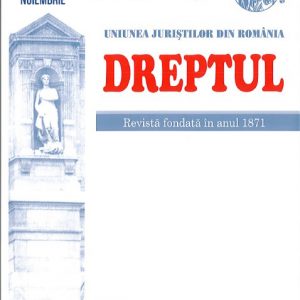 The foundations of European Union law lie in the reasons that European decision-makers have identified, after the two World Wars, firstly, for the establishment of the European Coal and Steel Community and then of the European Economic Community and the European Atomic Energy Community. These reasons, however, find their origins in the events that essentially marked the first half of the 20th century, identifying themselves, among other things, through the developments recorded by the international society, namely the international law, in general, evolutions which the European society, and, implicitly, the European Union law, would not have been possible to avoid.
The foundations of European Union law lie in the reasons that European decision-makers have identified, after the two World Wars, firstly, for the establishment of the European Coal and Steel Community and then of the European Economic Community and the European Atomic Energy Community. These reasons, however, find their origins in the events that essentially marked the first half of the 20th century, identifying themselves, among other things, through the developments recorded by the international society, namely the international law, in general, evolutions which the European society, and, implicitly, the European Union law, would not have been possible to avoid. -
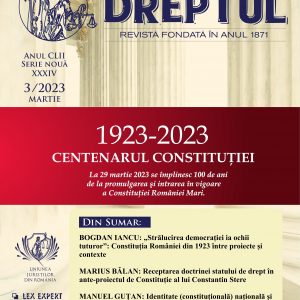
-
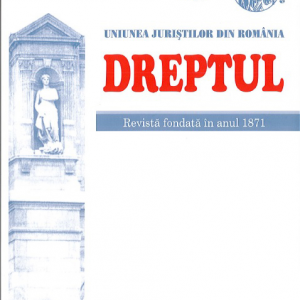 Fraud is perhaps the cornerstone of the Paulian action. In this sense, there is no right to action without there being a fraud in the interests of one or some of the creditors. Therefore, it is very important to know the elements that characterize the Paulian fraud. This is because the damage caused to the creditor is a consequence of the fraudulent attitude of the debtor who concludes an act with a third person with the sole purpose of hiding from the pursuit of certain goods. So, the first element to be determined in order to formulate a Paulian action is the existence of fraud that has caused the creditor’s prejudice. Through this study, we have tried to highlight some of the most important judgments in the French judicial practice that have created principles for the application of the Paulian action. Although many of them have been pronounced many decades ago, their effects are still occurring at present, and the courts which have pronounced them have shown wisdom and clarity in setting out principles that ultimately shaped a unitary judicial practice in French law. Finally, the study also presents the regulation of the Paulian fraud in the sense of the new Romanian Civil Code, with references to the new French Civil Code.
Fraud is perhaps the cornerstone of the Paulian action. In this sense, there is no right to action without there being a fraud in the interests of one or some of the creditors. Therefore, it is very important to know the elements that characterize the Paulian fraud. This is because the damage caused to the creditor is a consequence of the fraudulent attitude of the debtor who concludes an act with a third person with the sole purpose of hiding from the pursuit of certain goods. So, the first element to be determined in order to formulate a Paulian action is the existence of fraud that has caused the creditor’s prejudice. Through this study, we have tried to highlight some of the most important judgments in the French judicial practice that have created principles for the application of the Paulian action. Although many of them have been pronounced many decades ago, their effects are still occurring at present, and the courts which have pronounced them have shown wisdom and clarity in setting out principles that ultimately shaped a unitary judicial practice in French law. Finally, the study also presents the regulation of the Paulian fraud in the sense of the new Romanian Civil Code, with references to the new French Civil Code. -
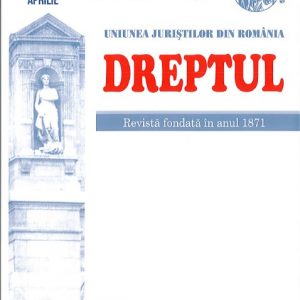
-
 The authentic document is the document drawn up or, as the case may be, received and authenticated by a public authority, by the notary public or by another person invested by the state with public authority. Likewise, any other document issued by a public authority and to which the law confers this character is authentic. In other words, in order to be qualified as „authenticated document”, a document must meet the following requirements: a) be drawn up or, where appropriate, received and authenticated by a public authority, a notary public or by another person invested by the state with public authority; b) the instrumenting agent must be competent from material and territorial point of view to instrument the document; c) to be drawn up in compliance with the formalities required by law or, as the legislator specifies, „in the form and under the conditions established by law”. The legislator devotes the field of authenticity to the document, specifying the elements which relate to authenticity, namely: establishing the identity of the parties; expressing their consent about their content; the signature of the parties and the date of the document [Article 269 (1) second sentence of the Civil Procedure Code, Article 90 (2) of the Law No 36/1995]. The signature of the public servant confers authenticity to the document on which it is given. It follows that it falls into the field of authenticity what the instrumenting agent finds ex propriis sensibus. The document which by its form and appearance (the signature of the public notary or the public servant, the seal of the authority, the registration number, etc.) has the aspect of an authentic document drawn up regularly enjoys the presumption of authenticity and validity, and the contesting party can only fight against it by means of the procedure of registration of forgery.
The authentic document is the document drawn up or, as the case may be, received and authenticated by a public authority, by the notary public or by another person invested by the state with public authority. Likewise, any other document issued by a public authority and to which the law confers this character is authentic. In other words, in order to be qualified as „authenticated document”, a document must meet the following requirements: a) be drawn up or, where appropriate, received and authenticated by a public authority, a notary public or by another person invested by the state with public authority; b) the instrumenting agent must be competent from material and territorial point of view to instrument the document; c) to be drawn up in compliance with the formalities required by law or, as the legislator specifies, „in the form and under the conditions established by law”. The legislator devotes the field of authenticity to the document, specifying the elements which relate to authenticity, namely: establishing the identity of the parties; expressing their consent about their content; the signature of the parties and the date of the document [Article 269 (1) second sentence of the Civil Procedure Code, Article 90 (2) of the Law No 36/1995]. The signature of the public servant confers authenticity to the document on which it is given. It follows that it falls into the field of authenticity what the instrumenting agent finds ex propriis sensibus. The document which by its form and appearance (the signature of the public notary or the public servant, the seal of the authority, the registration number, etc.) has the aspect of an authentic document drawn up regularly enjoys the presumption of authenticity and validity, and the contesting party can only fight against it by means of the procedure of registration of forgery. -
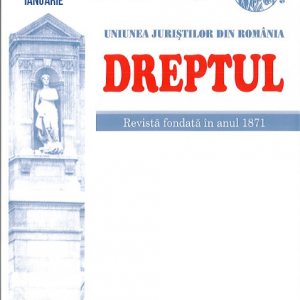 With rare exceptions, self-explanatory, the legal adages have proven out to be law constants, that are so enfranchised and widely accepted that, often, they have been converted from ,,rules” to ,,arguments”. Jurisprudence has capitalized them and is still capitalizing them either in the consideration of ,,their inherent binding legal force”, since, in their essence, they are objectified through legal rules, hence borrowing their value, either in the consideration of ,,their normative force” k within the newer meaning assigned to this concept k as ,,reference”, as ,,guidance”, as ,,standard” of interpretation and enforcement of the provisions of positive law. Two of these adages present a paradoxical and arguable legal circumstance: specialia generalibus derogant (special departs from general); nemo censetur ignorare legem (ignorance of the law excuses no one). They are not established in terminis (in terms) and sufficiently defined by legal dispositions. And, still, they have a binding legal force. These are, in essence, the subject matters proposed to be discussed in the study below.
With rare exceptions, self-explanatory, the legal adages have proven out to be law constants, that are so enfranchised and widely accepted that, often, they have been converted from ,,rules” to ,,arguments”. Jurisprudence has capitalized them and is still capitalizing them either in the consideration of ,,their inherent binding legal force”, since, in their essence, they are objectified through legal rules, hence borrowing their value, either in the consideration of ,,their normative force” k within the newer meaning assigned to this concept k as ,,reference”, as ,,guidance”, as ,,standard” of interpretation and enforcement of the provisions of positive law. Two of these adages present a paradoxical and arguable legal circumstance: specialia generalibus derogant (special departs from general); nemo censetur ignorare legem (ignorance of the law excuses no one). They are not established in terminis (in terms) and sufficiently defined by legal dispositions. And, still, they have a binding legal force. These are, in essence, the subject matters proposed to be discussed in the study below. -

-
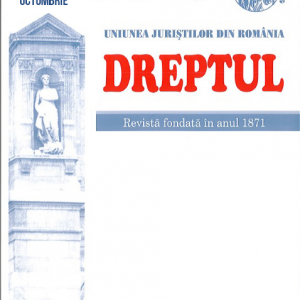 The authors make an analysis of the Romanian legislation in the matter of forensic reports – and, particularly, in the field of medical malpractice – and they establish that, in these areas, there is a plurality of normative acts of different levels (laws, Government ordinances, Government decisions, orders of ministers), regulations which, quite often, are confused, contradict each other, are incomplete, sometimes they are not correlated with the rules of principle in the matter of evidence included in the current Civil Procedure Code, respectively the Criminal Procedure Code etc. At the end of the analysis, the authors propose the repeal of this entire scattered legislation and the elaboration of a single normative act on the matter (at level of law or of Government ordinance) that, having regard to the current legislative experience, would completely and unitarily bring a modern, unique and unitary regulation with regard to the forensic reports (including those concerning the medical malpractice).
The authors make an analysis of the Romanian legislation in the matter of forensic reports – and, particularly, in the field of medical malpractice – and they establish that, in these areas, there is a plurality of normative acts of different levels (laws, Government ordinances, Government decisions, orders of ministers), regulations which, quite often, are confused, contradict each other, are incomplete, sometimes they are not correlated with the rules of principle in the matter of evidence included in the current Civil Procedure Code, respectively the Criminal Procedure Code etc. At the end of the analysis, the authors propose the repeal of this entire scattered legislation and the elaboration of a single normative act on the matter (at level of law or of Government ordinance) that, having regard to the current legislative experience, would completely and unitarily bring a modern, unique and unitary regulation with regard to the forensic reports (including those concerning the medical malpractice). -
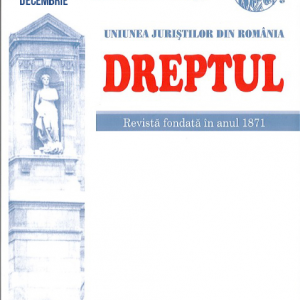 Relating to the provisions of the new Civil Code (Law no. 287/2009 republished in „The Official Gazette of Romania”, Part I, no. 505 of July 15, 2011, which was enforced on October 1st, 2011), the author examines in this paper the testament forms, in all respects on which they act. On this occasion, the author shows, on the one hand, that the regulation in question preserves many of the texts of the Civil Code of 1864, whose accuracy and actuality have been denied over time and, on the other hand, that it also establishes some new elements, required urgently by the new social realities. Doing so, Law no. 287/2009 becomes, regarding testament forms, a modern regulation, while the forms no longer used have been removed (such as mystic testament), and new short testament forms have been regulated, with a practical use that cannot be doubted (such as the testament made in case of epidemics, disasters, wars or other such exceptional circumstances, the testament made on board an aircraft, the testament made by the person admitted to a health institution) and expanding the scope of some forms (e.g. testament of amounts and values stored).
Relating to the provisions of the new Civil Code (Law no. 287/2009 republished in „The Official Gazette of Romania”, Part I, no. 505 of July 15, 2011, which was enforced on October 1st, 2011), the author examines in this paper the testament forms, in all respects on which they act. On this occasion, the author shows, on the one hand, that the regulation in question preserves many of the texts of the Civil Code of 1864, whose accuracy and actuality have been denied over time and, on the other hand, that it also establishes some new elements, required urgently by the new social realities. Doing so, Law no. 287/2009 becomes, regarding testament forms, a modern regulation, while the forms no longer used have been removed (such as mystic testament), and new short testament forms have been regulated, with a practical use that cannot be doubted (such as the testament made in case of epidemics, disasters, wars or other such exceptional circumstances, the testament made on board an aircraft, the testament made by the person admitted to a health institution) and expanding the scope of some forms (e.g. testament of amounts and values stored). -
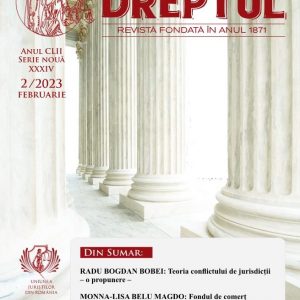
-
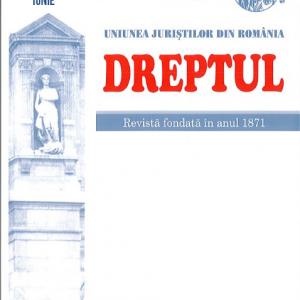 Based on the “judges dialogue” concept (institutionalized communication between the judges of various courts and levels of jurisdiction), the above study authors extrapolate this concept by mainly analyzing the forms of this “dialogue” between the 18 existing Constitutional Courts from as many countries of the 28 European Union Member States.
Based on the “judges dialogue” concept (institutionalized communication between the judges of various courts and levels of jurisdiction), the above study authors extrapolate this concept by mainly analyzing the forms of this “dialogue” between the 18 existing Constitutional Courts from as many countries of the 28 European Union Member States. -
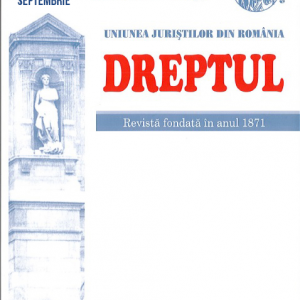 One condition of the status of repetition of an offence is the existence of the prior final order for conviction to imprisonment for more than 6 months, issued in the case of perpetration of an intentional crime. As regards the calculation of the time when the conviction order becomes final, the substantial criminal law rules shall apply. According to such rules, time shall not be calculated in hours, but only in days, weeks, months and years. Since a day expires at 1200 a.m., the perpetration of a new crime on the date when the previous decision becomes final does not entail the status of repetition of offence for the defendant, but the applicability of the institution of felonies in concert.
One condition of the status of repetition of an offence is the existence of the prior final order for conviction to imprisonment for more than 6 months, issued in the case of perpetration of an intentional crime. As regards the calculation of the time when the conviction order becomes final, the substantial criminal law rules shall apply. According to such rules, time shall not be calculated in hours, but only in days, weeks, months and years. Since a day expires at 1200 a.m., the perpetration of a new crime on the date when the previous decision becomes final does not entail the status of repetition of offence for the defendant, but the applicability of the institution of felonies in concert.
